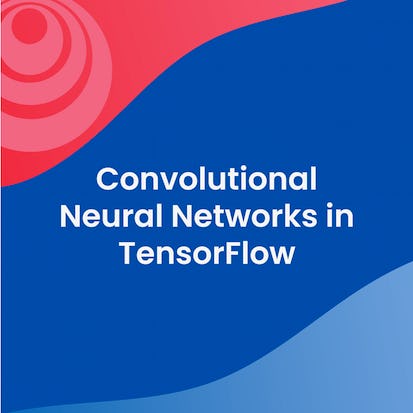- Level Professional
- المدة 11 ساعات hours
- الطبع بواسطة DeepLearning.AI
-
Offered by

عن
Bringing a machine learning model into the real world involves a lot more than just modeling. This Specialization will teach you how to navigate various deployment scenarios and use data more effectively to train your model. This second course teaches you how to run your machine learning models in mobile applications. You'll learn how to prepare models for a lower-powered, battery-operated devices, then execute models on both Android and iOS platforms. Finally, you'll explore how to deploy on embedded systems using TensorFlow on Raspberry Pi and microcontrollers. This Specialization builds upon our TensorFlow in Practice Specialization. If you are new to TensorFlow, we recommend that you take the TensorFlow in Practice Specialization first. To develop a deeper, foundational understanding of how neural networks work, we recommend that you take the Deep Learning Specialization.الوحدات
Course Introduction
1
Videos
- Introduction, A conversation with Andrew Ng
2
Readings
- Prerequisites
- Downloading the Ungraded Labs and Programming Assignments
Machine Learning Models in Mobile and Embedded Systems
4
Videos
- A few words from Laurence
- Features and components of mobile AI
- Architecture and performance
- Optimization Techniques
2
Readings
- GPU delegates
- [IMPORTANT] Have questions, issues or ideas? Join our Forum!
Taking a look at the saved model format
5
Videos
- Saving, converting, and optimizing a model
- Examples
- Quantization
- TF-Select
- Paths in Optimization
1
Readings
- Learn about supported ops and TF-Select
First primer on running models on mobile devices
1
Assignment
- Week 1 Quiz
4
Videos
- Running the models
- Transfer learning
- Converting a model to TFLite
- Transfer learning with TFLite
1
Readings
- Week 1 Wrap up
Lecture Notes (Optional)
1
Readings
- Lecture Notes Week 1
Graded Exercise - Train Your Own Model and Convert It to TFLite
- Exercise 1 - Train Your Own Model and Convert It to TFLite
1
Labs
- Exercise 1 - Train Your Own Model and Convert It to TFLite
1
Readings
- Exercise Description
Introduction
6
Videos
- Introduction, A conversation with Andrew
- Installation and resources
- Architecture of a model
- Initializing the Interpreter
- Preparing the Input
- Inference and results
1
Readings
- Android fundamentals and installation
Basic image classification
2
Videos
- Code walkthrough
- Run the App
Classifying camera images
2
Videos
- Classifying camera images
- Initialize and prepare input
Code walkthrough - camera image classifier
1
Videos
- Demo of camera image classifier
Object detection
2
Videos
- Initialize model and prepare inputs
- Inference and results
Code walkthrough of an object detection app
1
Assignment
- Week 2 Quiz
2
Videos
- Demo of the object detection App
- Code for the inference and results
1
Readings
- Week 2 Wrap up
Lecture Notes (Optional)
1
Readings
- Lecture Notes Week 2
Optional Exercise: Rock Paper Scissors for Android
1
Readings
- Description
Introduction
8
Videos
- Introduction, A conversation with Andrew Ng
- A few words from Laurence
- What is Swift?
- TensorFlowLiteSwift
- Cats vs Dogs App
- Taking the initial steps
- Scaling the image
- More steps in the process
3
Readings
- Important links
- Apple’s developer's site
- Apple's API
Next steps
7
Videos
- Looking at the App in Xcode
- What have we done so far and how do we continue?
- Using the App
- App architecture
- Model details
- Initial steps
- Final steps
2
Readings
- More details
- Camera related functionalities
Classification and detection
1
Assignment
- Week 3 Quiz
7
Videos
- Looking at the code for the image classification App
- Object classification intro
- TFL detect App
- App architecture
- Initial steps
- Final steps
- Looking at the code for the object detection model
2
Readings
- The Coco dataset
- Week 3 Wrap up
Lecture Notes (Optional)
1
Readings
- Lecture Notes Week 3
Optional Exercise - Rock, Paper, Scissors on iOS
1
Readings
- Description
Introduction
3
Videos
- Introduction, A conversation with Andrew Ng
- A few words from Laurence
- Devices
1
Readings
- Edge TPU models
Example: Raspberry Pi
6
Videos
- Starting to work on a Raspberry Pi
- How do we start?
- Image classification
- The 4 step process
- Object detection
- Back to the 4 step process
3
Readings
- Options to choose from
- Pre optimized mobileNet
- Object detection model trained on the coco
Raspberry pi demo
1
Videos
- Raspberry Pi demo
Microcontrollers
1
Assignment
- Week 4 Quiz
2
Videos
- Microcontrollers
- Closing words by Laurence
2
Readings
- Suggested links
- [IMPORTANT] Reminder about end of access to Lab Notebooks
Lecture Notes (Optional)
1
Readings
- Lecture Notes Week 4
Optional Exercise - Rock Paper Scissors on Raspberry Pi
1
Readings
- Description
Course 2 Wrap up
1
Videos
- A conversation with Andrew Ng
1
Readings
- Wrap up
Auto Summary
The "Device-based Models with TensorFlow Lite" course, offered by Coursera, focuses on running machine learning models on mobile applications and embedded systems. Taught by industry experts, it covers model preparation for low-power devices, execution on Android and iOS, and deployment on Raspberry Pi and microcontrollers. Suitable for IT and Computer Science professionals, the course spans 660 minutes and is available through Starter, Professional, and Paid subscriptions. Ideal for learners with a background in TensorFlow, it builds on the TensorFlow in Practice Specialization.

Laurence Moroney


